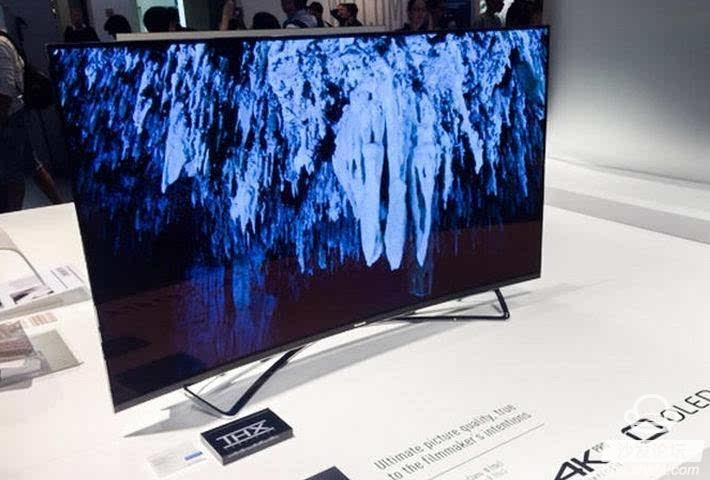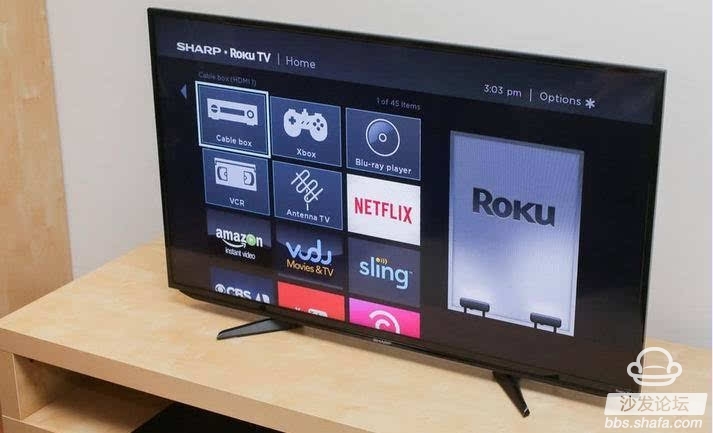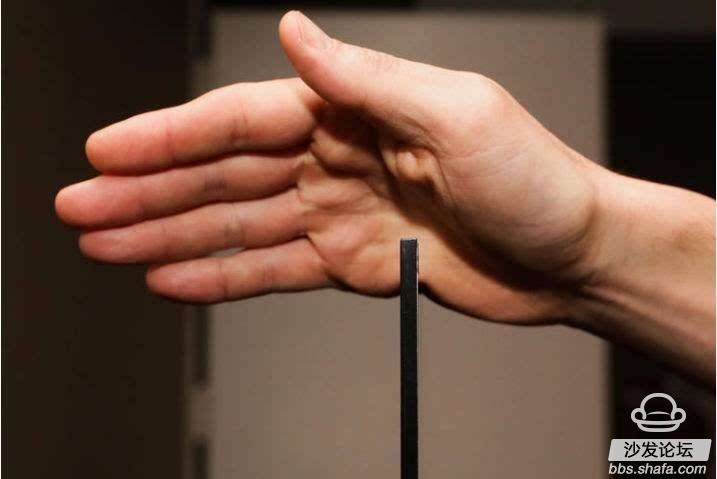At the annual International Consumer Electronics Show, the brand-new trend of television technology can attract the attention of people all over the world every time. 3D technology has been the focus of much attention, and later became OLED technology, followed by 4K and ultra-high-definition leading the trend. We believe that in January 2016, the hottest vocabulary most frequently seen on the 100-inch screen at the CES exhibition will be “HDR,†a high dynamic range image.
TV industry professionals see HDR as a TV technology that is more important than 3D or 4K. The benefits of HDR are more obvious than 4K and more attractive than 3D.
Since 4K TV has basically become mainstream, and the price is getting cheaper, the profit margin has become very small. Therefore, people who are eager for the advancement of TV technology are eagerly looking forward to new products – one is more price and ambition. High product. Because of this, TV manufacturers are now very optimistic about the prospects of HDR technology, I believe this technology allows consumers to spend more money on bigger and better TV products.

HDR will be the focus of TV technology at this year's CES show
First of all, TV HDR is not the same thing as photo HDR. The “HDR†option on mobile phones or cameras combines a large number of photos with different exposures to make up for the lack of sensor functionality. The high dynamic range image we are talking about here is a common vocabulary used to describe new, improved content, namely television episodes and movies, and brand new TV sets that can play such content. The most accurate description of HDR we have heard now is "not only more pixels, but better pixels."
The common 4K resolution only increases in the number of pixels while HDR significantly expands the contrast and color range that those pixels can display. The bright part of the image will become more bright, so the image looks more "deep." Color quality will also be improved, and colors such as blue, green, and red will become more prominent.
Just as you need to watch a 3D or 4K resolution video with a new type of TV, you will need a new type of TV to watch HDR images. We expect that most TV manufacturers will launch TV sets that can handle HDR content in 2016. But how will they do this? According to our evaluation of the most affordable HDR TV set in 2015, the Samsung UNJS8500, it did not bring much improvement. On the other hand, the expensive Samsung UNJS9500 can also provide very good HDR image effects.
The price of HDR is neither cheap nor easy to implement on TV. In addition to the 4K resolution, it requires an additional series of capabilities. In terms of content, it needs to establish cooperation with industry stakeholders such as Hollywood film and television companies, Netflix, Amazon Instant Video and other content distributors or manufacturers, and TV manufacturers.
So, the HDR content may be scarce for some time. For example, in the foreseeable future, it will certainly be less common than 3D and 4K content. HDR images are very effective. You may see many impressive product demos at this year's CES. However, how well these demo products fit into the living room is still unknown.

Other TV technology trends worth noting:
4K TV will be everywhere: Nearly all TVs introduced at this year's CES show will have 4K resolution, and viewers may not see TV products with less than 1080p resolution. 4K TVs are cheap and varied, and are definitely the first choice for many users who want to buy TVs.
Slow spread of 4K content: In a strict sense, this is not a TV hardware trend, but 4K Blu-ray technology will be officially unveiled at this exhibition. The Samsung UBD-K8500, which was first introduced at the IFA exhibition in September this year, should be available in early 2016. We would not be surprised to see if other manufacturers have introduced such products. TV manufacturers such as Sony will launch 4K Blu-ray discs in early 2016. If we are lucky, there may be vendors that will launch more 4K streaming content.
LG OLED TV vs. Samsung LCD TV: Thanks to LG's dominance in OLED TV technology, the company acclaimed CNET's list of “Best Image Quality Manufacturers†and achieved significant results in 2015. success. We estimate that Samsung and other LG competitors will not introduce OLED TVs, but brands like Panasonic may sell OLED TVs worldwide. Panasonic currently sells OLED TVs in Europe. At the same time, we expect that manufacturers such as Samsung will actively promote the advantages of LCD over OLEDs, that is, the light output function will be improved.

Will Roku be integrated with more TV brands in 2016?
Platformization of Smart TV: Last year, Sony and Sharp officially launched the first batch of Android TVs. At the same time, the Roku TV brand camp further expanded, and Sharp, LG and Insignia all integrated with the Roku platform. Will platform-based smart TV systems replace today's common self-developed software? Don't expect Samsung and LG to invest heavily in Tizen and Web OS systems, but smaller companies may choose to use Android or Roku platforms on their smart TVs.
Curved TV penetration: Although Samsung is a trend leader in the TV industry, we estimate that not only will LG introduce more OLED models, but there will not be too many TV makers joining the ranks of curved TVs. However, TV design will continue to be a hot topic, whether it is on glass or metal materials, or on increasingly thin designs.

Will TV opportunities become thinner in 2016?
Mini-brand promotion: TV manufacturers are always trying to differentiate their products from mini-brand products such as Sony Trinitron and Panasonic Viera. Last year, Samsung regained its mini-brand strategy and launched SUHD, an LCD TV that Samsung claims to bring more visual enjoyment to users. Will other TV makers also try to replicate Samsung's success?
The marginalization of important TV brands: TV production is a challenging industry, and only a few companies such as Samsung, LG and Vizio seem to be able to endure. Both Panasonic and Sony have encountered problems in recent years, dramatically reducing their product lines (though Sony has improved its TV business after it was stripped out), and Sharp's market share has been eroded by Hisense. At the same time, Hisense and another TV brand in China, TCL, are still actively exploring overseas markets.
TV industry professionals see HDR as a TV technology that is more important than 3D or 4K. The benefits of HDR are more obvious than 4K and more attractive than 3D.
Since 4K TV has basically become mainstream, and the price is getting cheaper, the profit margin has become very small. Therefore, people who are eager for the advancement of TV technology are eagerly looking forward to new products – one is more price and ambition. High product. Because of this, TV manufacturers are now very optimistic about the prospects of HDR technology, I believe this technology allows consumers to spend more money on bigger and better TV products.

HDR will be the focus of TV technology at this year's CES show
First of all, TV HDR is not the same thing as photo HDR. The “HDR†option on mobile phones or cameras combines a large number of photos with different exposures to make up for the lack of sensor functionality. The high dynamic range image we are talking about here is a common vocabulary used to describe new, improved content, namely television episodes and movies, and brand new TV sets that can play such content. The most accurate description of HDR we have heard now is "not only more pixels, but better pixels."
The common 4K resolution only increases in the number of pixels while HDR significantly expands the contrast and color range that those pixels can display. The bright part of the image will become more bright, so the image looks more "deep." Color quality will also be improved, and colors such as blue, green, and red will become more prominent.
Just as you need to watch a 3D or 4K resolution video with a new type of TV, you will need a new type of TV to watch HDR images. We expect that most TV manufacturers will launch TV sets that can handle HDR content in 2016. But how will they do this? According to our evaluation of the most affordable HDR TV set in 2015, the Samsung UNJS8500, it did not bring much improvement. On the other hand, the expensive Samsung UNJS9500 can also provide very good HDR image effects.
The price of HDR is neither cheap nor easy to implement on TV. In addition to the 4K resolution, it requires an additional series of capabilities. In terms of content, it needs to establish cooperation with industry stakeholders such as Hollywood film and television companies, Netflix, Amazon Instant Video and other content distributors or manufacturers, and TV manufacturers.
So, the HDR content may be scarce for some time. For example, in the foreseeable future, it will certainly be less common than 3D and 4K content. HDR images are very effective. You may see many impressive product demos at this year's CES. However, how well these demo products fit into the living room is still unknown.

Panasonic Launches First OLED TV at IFA Expo in Berlin this year
Other TV technology trends worth noting:
4K TV will be everywhere: Nearly all TVs introduced at this year's CES show will have 4K resolution, and viewers may not see TV products with less than 1080p resolution. 4K TVs are cheap and varied, and are definitely the first choice for many users who want to buy TVs.
Slow spread of 4K content: In a strict sense, this is not a TV hardware trend, but 4K Blu-ray technology will be officially unveiled at this exhibition. The Samsung UBD-K8500, which was first introduced at the IFA exhibition in September this year, should be available in early 2016. We would not be surprised to see if other manufacturers have introduced such products. TV manufacturers such as Sony will launch 4K Blu-ray discs in early 2016. If we are lucky, there may be vendors that will launch more 4K streaming content.
LG OLED TV vs. Samsung LCD TV: Thanks to LG's dominance in OLED TV technology, the company acclaimed CNET's list of “Best Image Quality Manufacturers†and achieved significant results in 2015. success. We estimate that Samsung and other LG competitors will not introduce OLED TVs, but brands like Panasonic may sell OLED TVs worldwide. Panasonic currently sells OLED TVs in Europe. At the same time, we expect that manufacturers such as Samsung will actively promote the advantages of LCD over OLEDs, that is, the light output function will be improved.

Will Roku be integrated with more TV brands in 2016?
Platformization of Smart TV: Last year, Sony and Sharp officially launched the first batch of Android TVs. At the same time, the Roku TV brand camp further expanded, and Sharp, LG and Insignia all integrated with the Roku platform. Will platform-based smart TV systems replace today's common self-developed software? Don't expect Samsung and LG to invest heavily in Tizen and Web OS systems, but smaller companies may choose to use Android or Roku platforms on their smart TVs.
Curved TV penetration: Although Samsung is a trend leader in the TV industry, we estimate that not only will LG introduce more OLED models, but there will not be too many TV makers joining the ranks of curved TVs. However, TV design will continue to be a hot topic, whether it is on glass or metal materials, or on increasingly thin designs.

Will TV opportunities become thinner in 2016?
Mini-brand promotion: TV manufacturers are always trying to differentiate their products from mini-brand products such as Sony Trinitron and Panasonic Viera. Last year, Samsung regained its mini-brand strategy and launched SUHD, an LCD TV that Samsung claims to bring more visual enjoyment to users. Will other TV makers also try to replicate Samsung's success?
The marginalization of important TV brands: TV production is a challenging industry, and only a few companies such as Samsung, LG and Vizio seem to be able to endure. Both Panasonic and Sony have encountered problems in recent years, dramatically reducing their product lines (though Sony has improved its TV business after it was stripped out), and Sharp's market share has been eroded by Hisense. At the same time, Hisense and another TV brand in China, TCL, are still actively exploring overseas markets.